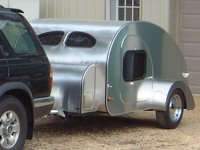By electrical contractor, I mean he works on 240v house wiring, shops, commercial, industrial, camera systems, etc.
But today, he was persuaded to look at his mate's 2015 Australian delivered Jeep Grand Cherokee.
A towbar kit for this thing was $2500 plus fitting, so the guy bought his own tow hitch setup cost $400 from the states. But, no lights.
So he got a fancy pants plug and play loom. Just plug it all together and be happy, right?
Nope, None of it is working and after taking a look, my boy phoned a friend. Me.

The plug'n'play loom has these connectors where you unplug a tail light, plug in your "piggyback" loom and plug the vehicle wiring back in.
Like this:
Hope that makes sense.
So there is a piggy back connector for brake, tail light and left and right indicators.
These feed into a little black box that furnishes 4 lines out: earth, tail lights, left brake/indicator, right brake/indicator.
i.e. standard 4 pin US trailer socket that flashes the brake lights for indicators.
Edit: Note that it is piggybacking off the rear lights, it hasn't been plugged into a socket that needs activating via an ECU re-flash.
From there he has plugged in another black box which is designed to convert standard US 4 pin to Euro 7 pin, splitting the brake/indicator functions apart again.
Of course, the whole shebang doesn't work. At the 4 pin out from the first black box, we can measure ground, tail lights, and right and left brake lights. The right and left brake lights do not not flash if one or the other indicator is turned on.
I looked at it and did a few basic tests. In consultation with my son we came to the conclusion that perhaps the first little black box, the one that combines individual brake and turn signals, isn't functioning as intended.
My son has had the covers of these black boxes and they are "potted". i.e. the circuitry has been completely encased in some sort of resin. Totally unserviceable/untestable.
Basically what this guy has done, using plug'n'play kits, is take individual Australian lights, combine them to 4 pin multifunction US trailer lights with combined brake light/turn signals, convert that to 7 pin Euro spec that splits the brake lights and turn signals, then plug in an old Australian 7 pin trailer and find it doesn't work.
Dunno about you guys, but I am less than surprised.

Anyway, assuming that there is no magic silver bullet "ah ya forgot to do this" solution, my question is this:
Can you take all this out and do it Ol' Skool?
I.e. grab yourself some 7 conductor trailer cable and some scotch locks and tap off each individual light, and run that to a socket wired in accordance with Australian 7 pin wiring.
i.e. get rid of two convertors and simply power the trailer lights direct like the good 'ol days?
I ask, not because it is complicated (I could wire it in my sleep I reckon), but because this $80,000 Jeep is running all LED lighting and I'm not sure what the circuitry can handle; nor whether the flasher circuit will get upset if extra load is applied.
The first black box is powered from the battery, leading me to think there might not be much extra load on the wiring to the vehicle lights.
Keen t hear what people do.




 (Non-partisan folks!)
(Non-partisan folks!)